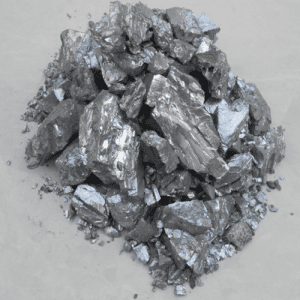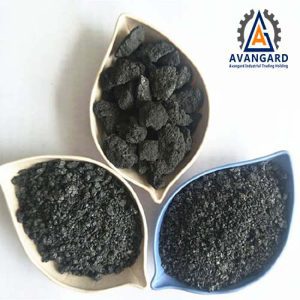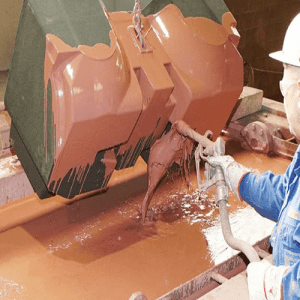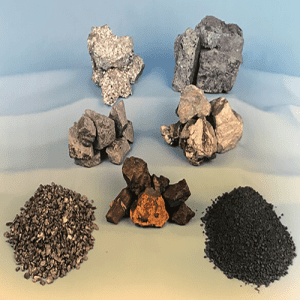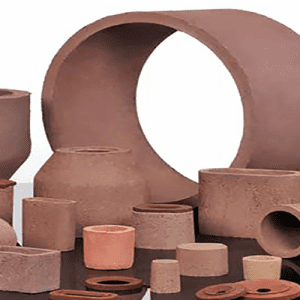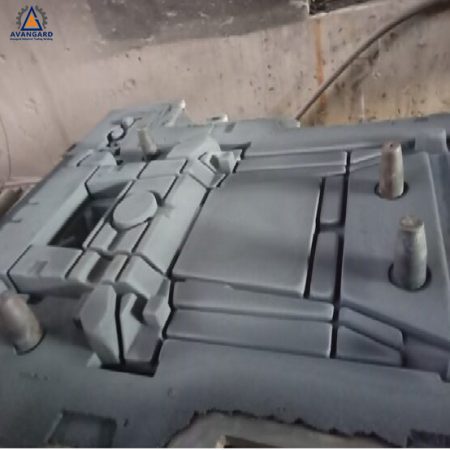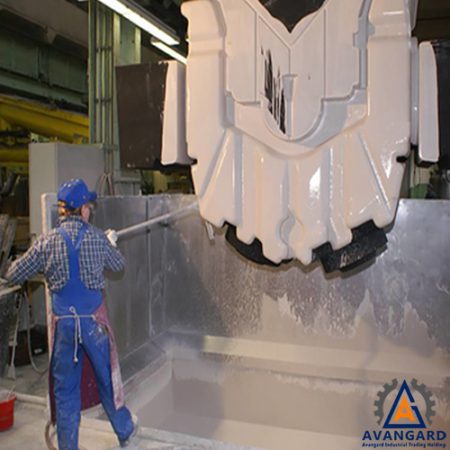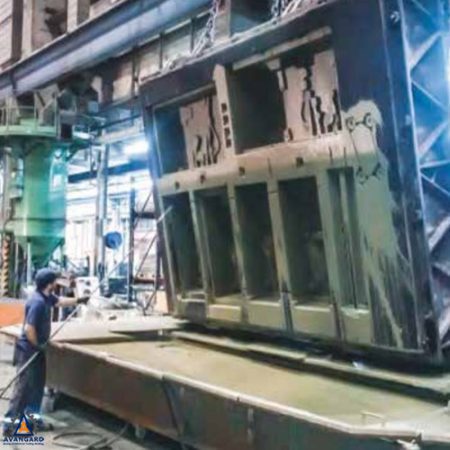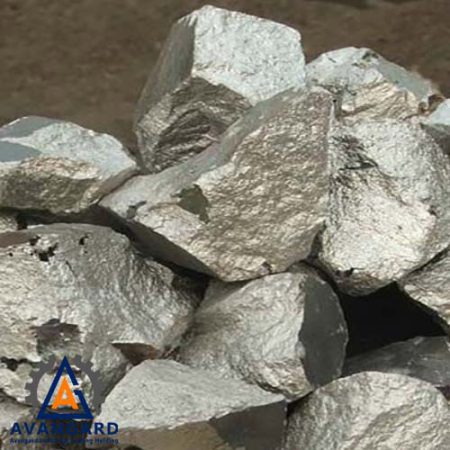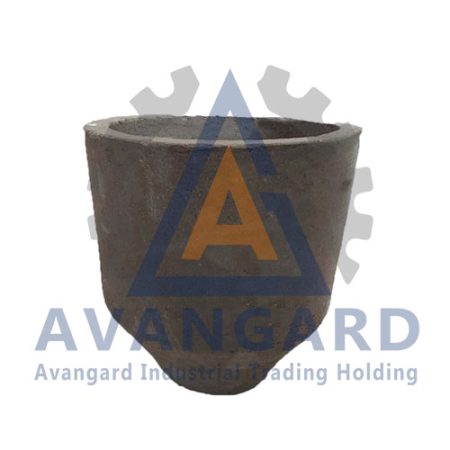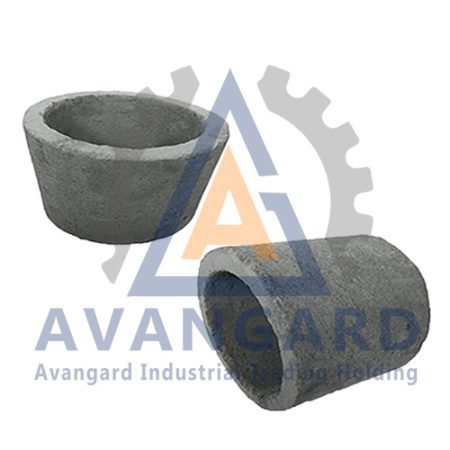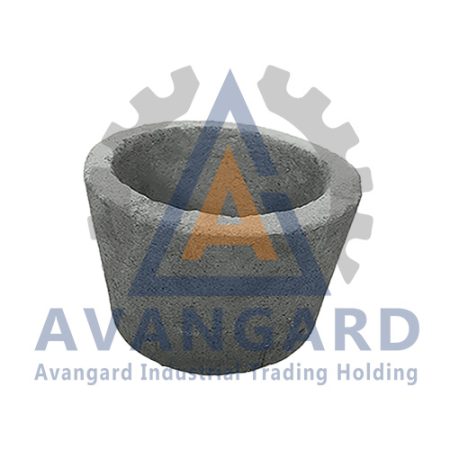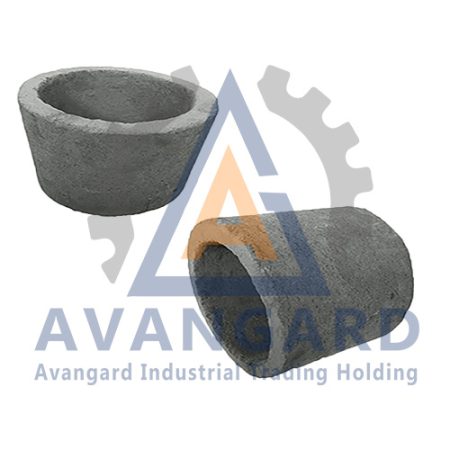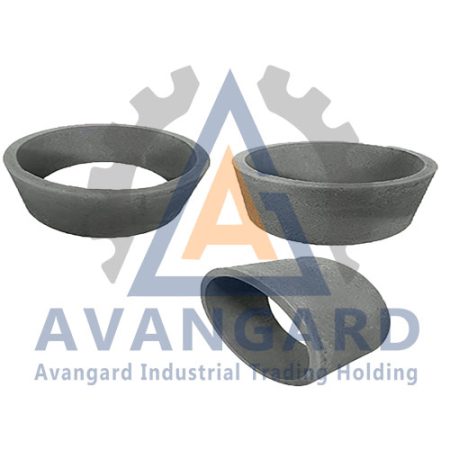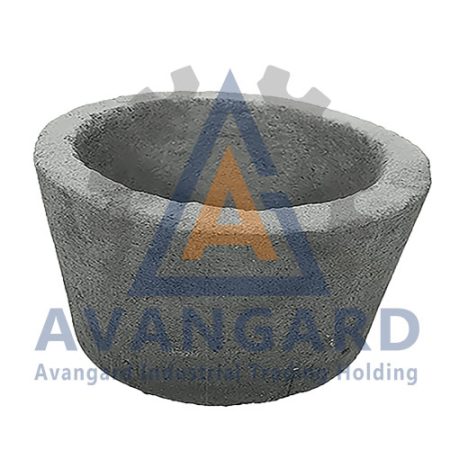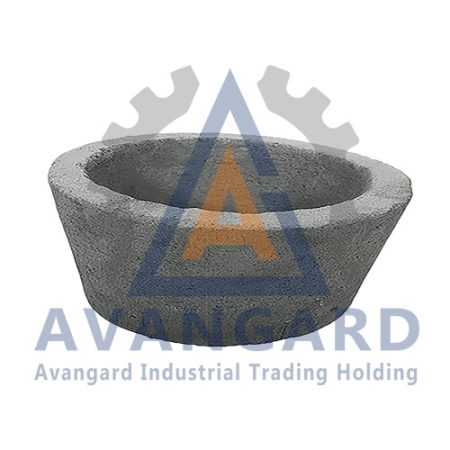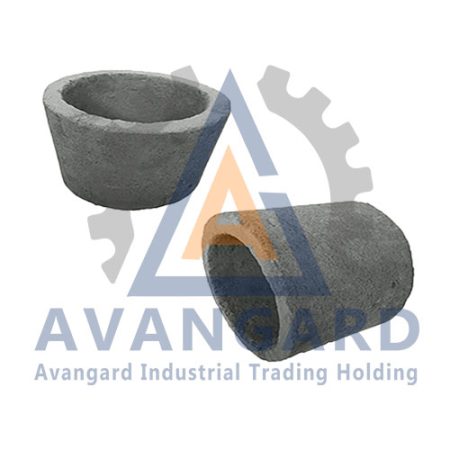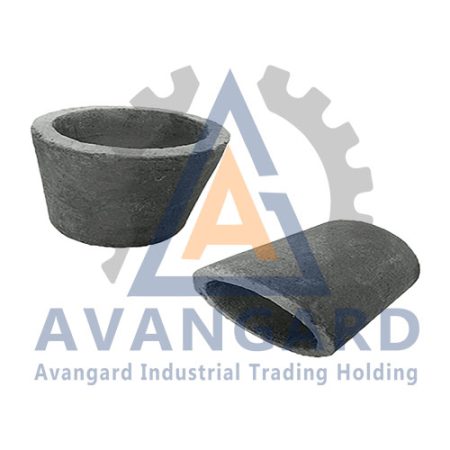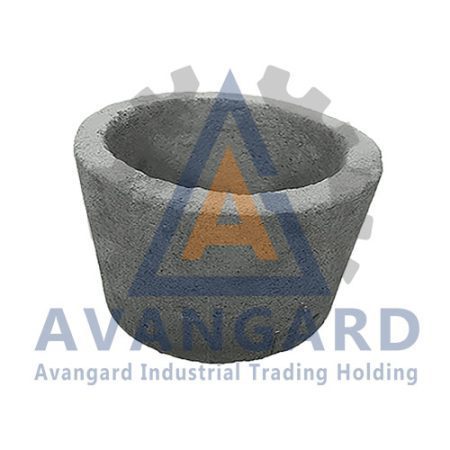Raw Materials for Casting
Casting is one of the oldest methods of producing metal parts. In this method, molten metals are poured into a mold and allowed to solidify, taking the shape of the mold’s cavity. Finally, the produced part is removed from the mold. Today, with the advancement of science and technology in the production of cast parts, noble and bulk ferroalloys, such as ferromolybdenum, ferrosilicon, ferrotitanium, ferrotungsten, ferroboron, ferrovanadium, ferroniobium, ferrophosphorus, ferrochromium, ferromanganese, ferro silico calcium, ferro silico manganese, ferro silico magnesium, ferro silico zirconium, graphite, and other additives, are used to produce precise alloys.
In some specific cases, pure metals such as chrome metal, nickel, silicon metal, zinc, manganese, tin, lead, indium, calcium metal, cobalt, etc., are used in the alloying of sensitive parts. Also, to prevent defects caused by casting, exothermic sleeves (cylindrical, pot-shaped, and oval) and coatings (refractory paint) are used. For consultation, order placement, purchase of raw materials for casting, or in other words, the purchase of casting supplies in the metallurgy industry, and price inquiries for all materials and services, contact the sales experts of the raw material supply unit of Avangard Holding.
Exothermic Sleeves
Exothermic sleeves are prefabricated forms of auxiliary feeders that, by delaying the solidification time, lead to increased feeding efficiency compared to sand feeders, etc. The use of auxiliary feeders increases the efficiency of casting parts, reduces cleaning costs, eliminates shrinkage defects, and more. Casting feeding sleeves are able to feed approximately 33% of the feeding volume to the solidifying cast part, but for a greater safety factor, it is suggested that in technology calculations, 30% of the molten feeding volume be considered for feeding the part, in such a way that the modulus of the remaining feed is sufficient at the end of solidification compared to the cast part.
Sleeves come in different shapes and sizes depending on the modulus and molten feeding range, and are divided into three categories: cylindrical sleeves, oval sleeves, and pot-shaped or conic sleeves. It is worth noting that casting sleeves are one of the most important types of raw materials for casting.

Refractory Coating for Casting
Refractory coatings can be considered a special type of paint with a unique formula for use in the casting industry, with different refractories such as zirconium, graphite, magnesite, alumina, etc., for casting various types of carbon steel, alloy steel, manganese steel or Hadfield steel, all types of cast iron, and various non-ferrous metals for use in sand or die molds. They have a paste-like appearance and are diluted with alcohol for use. The difference between them and ordinary paints is that they are made to withstand the high temperature of the molten metal and act as a barrier against the molten metal and the surface of the core or mold, preventing sand burning and washing away of the sand by the molten metal.
The coating also has the ability to retain the heat of the melt and increase its fluidity. Types of coatings include alcohol-based coatings, which are used for casting steel and cast iron, water-based coatings for casting cast iron, and casting coatings for lost foam and full mold methods. The mold surface is painted using a spray gun by spraying, with a brush, or by immersion. The advantages of using refractory casting coatings include reducing or eliminating melt penetration, reducing or eliminating sand burning, preventing the washing away of sand by the molten metal, a smoother part surface, overall improvement in part quality, reduction of waste, reduction of cleaning costs, and increased production.
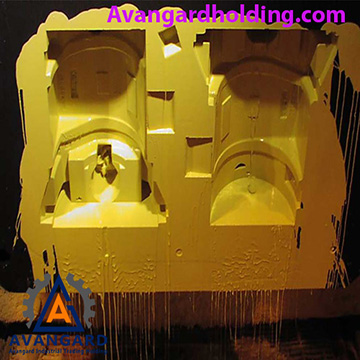
Ferroalloys
Ferroalloys are made of iron and other elements such as silicon, manganese, chromium, molybdenum, etc., which are added as alloying agents and additives to molten metals, steel, cast iron, and other ferrous and non-ferrous metals in the casting industry. Casting ferroalloys are considered a subcategory of raw materials for casting, and the purpose of these alloys is to improve the final properties of the part and to make necessary changes in the structure by adding the desired ferroalloy to the melt. Fluxes are products that are used for melting, igniting, and reducing the melting temperature. Ferroalloys can be in the form of rocks, minerals, or synthetic compounds.
Due to the fact that ferroalloys have a lower specific gravity than the melt, they collect at the top of the ladle (melting chambers), and their excess is separated from the melt as slag. Ferromolybdenum, ferrosilicon, ferrotitanium, ferrotungsten, ferroboron, ferrovanadium, ferroniobium, ferrophosphorus, ferrochromium, ferromanganese, ferro silico calcium, ferro silico manganese, ferro silico magnesium, and ferro silico zirconium are among the most widely used and important ferroalloys in the casting industry. All of these ferroalloys have different sizes and granulations, which are available in the market according to their grade and purity percentage. To purchase various raw materials for casting, you can contact our sales experts.

Related topic : Crusher and Road Construction
Graphite
Graphite or metallurgical coke is one of the most important allotropes of carbon. The structure of this material is layered and is formed by the arrangement of 6 carbon atoms in a regular hexagonal pattern. Metallurgical coke is, in fact, one of the derivatives of the element carbon, which has many applications in various industries. Graphite is divided into three products: high-sulfur graphite, low-sulfur graphite, and greasy graphite, each of which is divided into several categories according to their analysis range and granulation. Graphite is a main material in the metallurgical industries and has a wide range of applications. Below are some of the main uses of metallurgical coke:
1. Steelmaking: One of the main uses of graphite is in the steelmaking industry. Graphite is used as a source of carbon for producing steel. The carbon in graphite is added to steel to improve the mechanical properties, hardness, and other features of steel.
2. Aluminum production: Graphite is also used in the aluminum production process. In the process of electrolyzing bauxite into aluminum, carbon graphite is used as an electrode, and in the electrolysis process, carbon is separated from the graphite by oxygen, and aluminum is produced.
3. Steel and aluminum industries: Metallurgical graphite is also used in other industries such as steel and aluminum that need a source of carbon. In these industries, graphite is used as a cheap and effective source of carbon.
4. Iron and steel industries: In the iron and steel industries, graphite is also used as an energy source. Graphite is used as fuel in iron and steel melting furnaces.
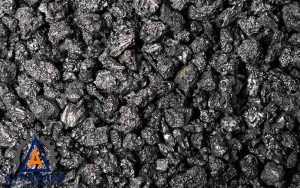
Pure Metals
Pure metals include specific and key elements used in the casting industries, including chrome metal, nickel, silicon metal, zinc, manganese, tin, lead, indium, calcium metal, and cobalt, which are available in the market with a purity of more than 98%. By precisely combining pure metals, it is possible to achieve impact and corrosion resistance, flexibility, improved mechanical properties, physical properties, and other desired characteristics of the cast part for use in various industries. The application of pure metals among raw materials for casting is very extensive and is used in various industries. Some of the applications of these metals are:
1. Production of precise parts:
Pure metals such as aluminum, copper, and iron are used in various industries to produce precise and complex parts.
2. Production of tools and machinery:
Some pure metals are used to produce tools and machinery because their high mechanical properties allow them to withstand harsh working conditions.
3. Automotive industry:
Pure metals are used in the automotive industry to produce various car parts because they are suitable for this application due to their high strength and resistance.
4. Production of electrical equipment:
Some pure metals are used in the production of electrical equipment such as motors, generators, and power cables.
5. Aerospace industry:
In the aerospace industry, pure metals are used as structural materials and components of tools and equipment due to their high resistance and strength against harsh space conditions.

Application of Casting Raw Materials
The raw materials used in the casting industry are very diverse and are widely used in the production of various parts, including metal, non-metal, cast iron, aluminum, and other alloys. These raw materials help produce parts with different characteristics and are selected according to the specific needs of each industry and application. For example, cast iron casting raw materials or steel casting raw materials are used to produce cast iron and steel parts such as machine parts, automobile parts, building structures; for making aluminum parts for cars, aerospace, and other light and corrosion-resistant applications; for producing parts that require resistance to heat and thermal shock, such as parts used in the aerospace and energy industries; and parts that require exceptional resistance or lightness, such as aerospace and medical parts.
Sale of Casting Supplies (Sale of Raw Materials for Casting)
To inquire about the price of raw materials for casting, you can visit the Avangard Holding store, which specializes in the field of casting. There, you can find raw materials for casting and all kinds of supplies needed for casting services, and get expert advice from the sales experts of raw materials for casting of Avangard Company, and proceed to purchase.
Purchase of Raw Materials for Casting
To purchase raw materials for casting, including various types of casting sand, various types of casting ferroalloys, various types of exothermic insulating casting sleeves, various types of casting coatings, various types of casting waste, and purchase casting supplies, contact the Avangard casting supplies sales unit.
Price of Raw Materials for Casting
The price of raw materials for casting is very diverse and can depend on various factors such as the type of material, the amount of purchase, the market, and economic conditions. In addition, each raw material has its own specific price. Please contact the sales unit of Avangard Company to purchase and inquire about the price of raw materials for casting.
 فارسی
فارسی Arabic
Arabic



